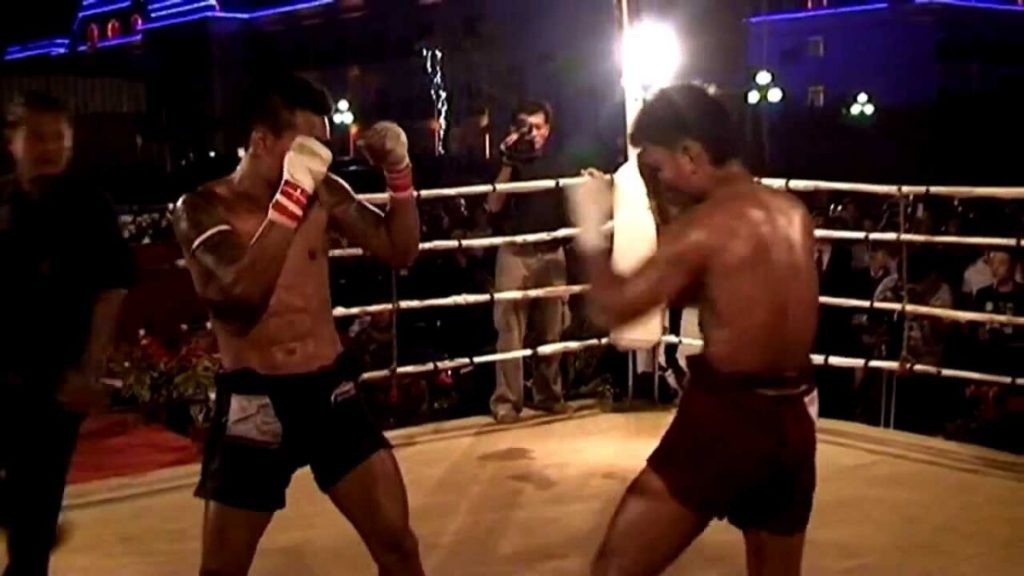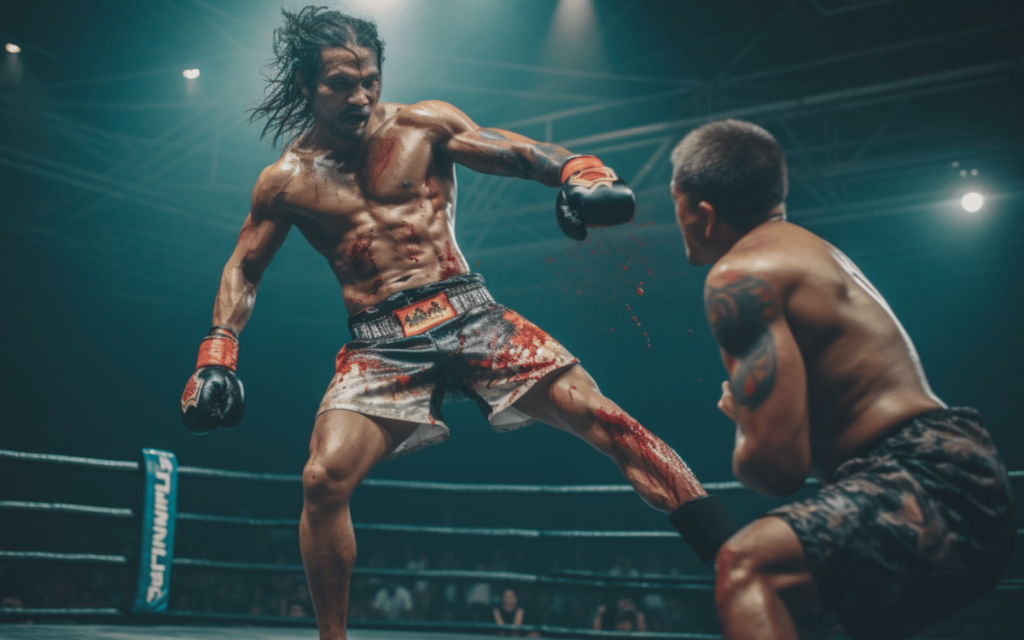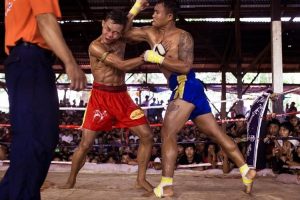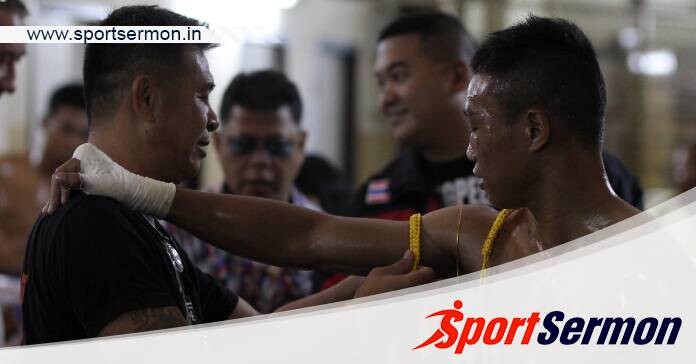Muay Thai Vs Lethwei: The histories and national identities of the adjacent nations, Thailand and Myanmar (formerly Burma), are strongly rooted in the martial arts of Lethwei and Muay Thai. Because these nations are bordered by one another, casual spectators would assume that these sports are nearly interchangeable. Even their names, “The Art Of Eight Limbs” (Muay Thai) and “The Art Of Nine Limbs” (Lethwei), hint that any differences between them may be resolved by just taking the headbutts off of the latter. But a closer look reveals that behind the surface, every sport has its own expression and style that alters how matches are played and scored.
This article explains how each sport’s laws have affected its growth into a worldwide sport after summarising the history, pre-fight customs, and scoring systems that make each sport distinctive.
Muay Thai Vs Lethwei: How Do Differ From Each Other?
1) History

Lethwei and Muay Thai have a long history of being used as weapons of war, occasionally even being placed against one another in conflicts between their native nations over territory and resources.
The first Burmese state was founded in the tenth century by the warrior king Anawratha, who used martial skills to subjugate nearby nations. This is where Lethwei got its start. Boys all around the country were taught the craft and took part in various tournaments until 1886, when British rulers outlawed the activity and drove it underground, making it a vital component of the national identity.
The Thai army adopted muay thai in the 1600s, decades after its Burmese equivalent, and it remained a vital component of the country’s military education for generations afterwards. It was a major factor in the Thai-Burmese War of 1774–1776, which gave rise to legends like “The Father of Muay Thai,” Nai Khanom Tom, whose victory against ten of Burma’s top fighters is now honoured as a national holiday in Thailand.
There were many more parallels between Muay Thai and Lethwei in antiquity than there are between them now. Traditionally, Muay Thai, also called Muay Boran or Muay Khat Chuek, was fought without gloves on the sand in a roped circle, just as in old Lethwei competitions. Not until the 1920s, when Lethwei was still illegal in its native country, did Muay Thai undergo a modernising phase that saw boxing rings and leather gloves become standard equipment across Thailand. When the sport was legalised in 1948, Lethwei bouts also started using boxing rings; nevertheless, the fighters’ hands are still only partially shielded by gauze during bare-knuckle fights.
You might also be interested in reading this: Typical Muay Thai Fouls You Should Be Aware Of
2) Pre-Fight Rituals

Members of Lethwei and Muay Thai participate in pre-fight dance rituals before to competition. Muay Thai practitioners perform a ceremony known as the “Wai Khru.” On the other hand, the Lethwei “Lethwei Yay” is a way to show off one’s skills and kindly challenge a rival to a duel. It is done as a sign of respect for those who have trained them and as a prayer for protection during the upcoming battle. Because these rituals are so similar, many fans are unable to distinguish between them. Luckily, both dances include subtle cues that, when observed, highlight their unique characteristics.
Fighters using the traditional Mongkhon headgear will start a Muay Thai Wai Khru match by “sealing the ring,” or moving from corner to corner while placing their hand on the top rope. In contrast, the Lethwei Yay is initiated by the “Lekkha Moun.” In this move, a fighter will bend their left arm and use their cupped right hand to hit their elbow crease three times.
3) Guidelines And Scores

Over the past century, both Muay Thai and Lethwei have seen a number of rule and scoring criteria modifications as the sport attempt to reach a global public that is mostly unaware of their customary scoring methods. Because of this, the scoring system for each sport varies depending on the location of a match. However, for the sake of simplicity, this article will compare the Tournament Lethwei Federation ruleset, which was adopted in 1996 by the Ministry of Health and Sports in Myanmar, and the five-round stadium Muay Thai scoring system. These two systems are currently among the most dominant in their respective sports.
Lethwei is fought over three, four, or five rounds, each lasting three minutes, with a two-minute break in between. Historically, the only way to win was by knockout, which is uncommon because fighters are given a two-minute timeout after a knockout, even if it puts them to sleep, during which they can choose to resume.
In light of the fact that most fights end in a tie, even when one fighter dominates the whole battle, the contemporary rule set introduced a scoring system that would enable judges to declare a winner even in situations where both competitors were still standing at the final bell. Judges use this updated approach to choose the winner by taking into account factors including aggressiveness, damage, blood drawn, and notable strikes every round. Lethwei boxers therefore have a tendency to draw blood and like punches, headbutts, and elbows.
Stadium Muay Thai does not usually determine the victor by violence or carnage, in contrast to Lethwei, which is fought over five rounds of two minutes each with a two-minute break. Judges base their rulings more on a fighter’s ability to control the tempo of a fight and how well they use their strikes than on hits or overt aggressiveness. Kicks, knees, and sweeps are often used by Nak Muays to achieve their striking objectives, which aim to cause an opponent to fold their body or lose their balance. Unlike modern Lethwei, which is scored round by round, Muay Thai contests are scored as a whole.
Accordingly, fighters usually get off to a slower start than other combat sports in order to conserve energy for a powerful conclusion. In the video above, Muay Thai writer Matt Lucas delves further into this intricate procedure.
Muay Thai Vs Lethwei – In summary
When all of this is considered, it becomes evident that these martial arts are not just about having a “ninth limb” or not, and even though both have undergone changes in the past century to become more westernised, this does not imply that audiences around the world have embraced them equally.
It appears that Muay Thai has emerged as a definite favourite among fans and combatants worldwide. With advertisements taking place in nations like Saudi Arabia, Mexico, and even Britain, it has become a global phenomenon. There have even been requests for Muay Thai to be recognised as an Olympic sport since several Muay Thai regulatory organisations hold multiple amateur world championships each year.
On the other hand, Lethwei’s growth has been slower. The severe ruleset that has made it illegal in all but 11 countries has hindered its popularity, despite the fact that the usage of headbutts, the lack of protective gloves, and the high number of knockouts lure fans who enjoy carnage. If the sport is to continue to exist on a worldwide scale in the future, it will need to undergo more adaptations as the Lethwei World Championship, its sole international promoter, will cease operations in March 2021.

